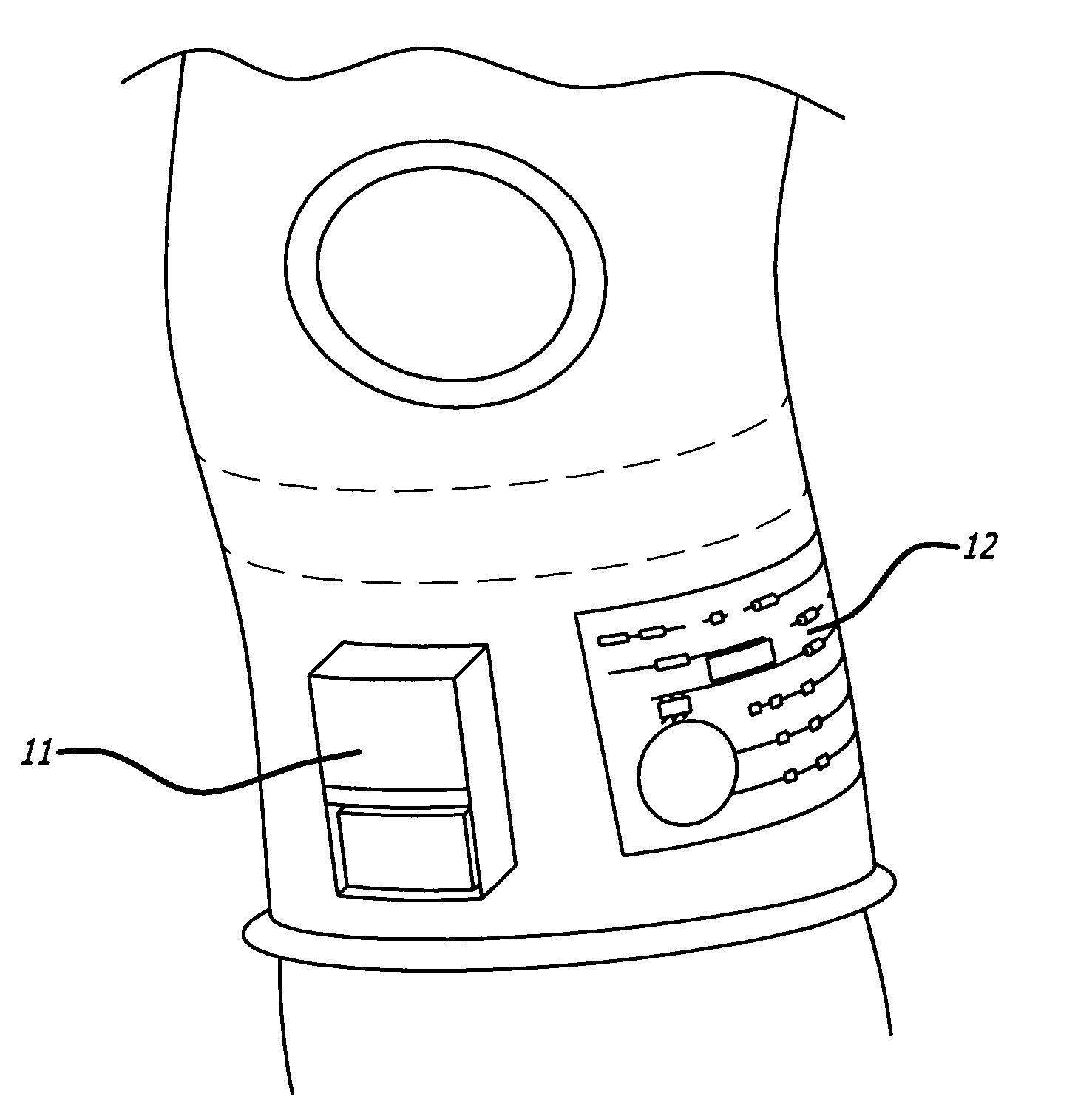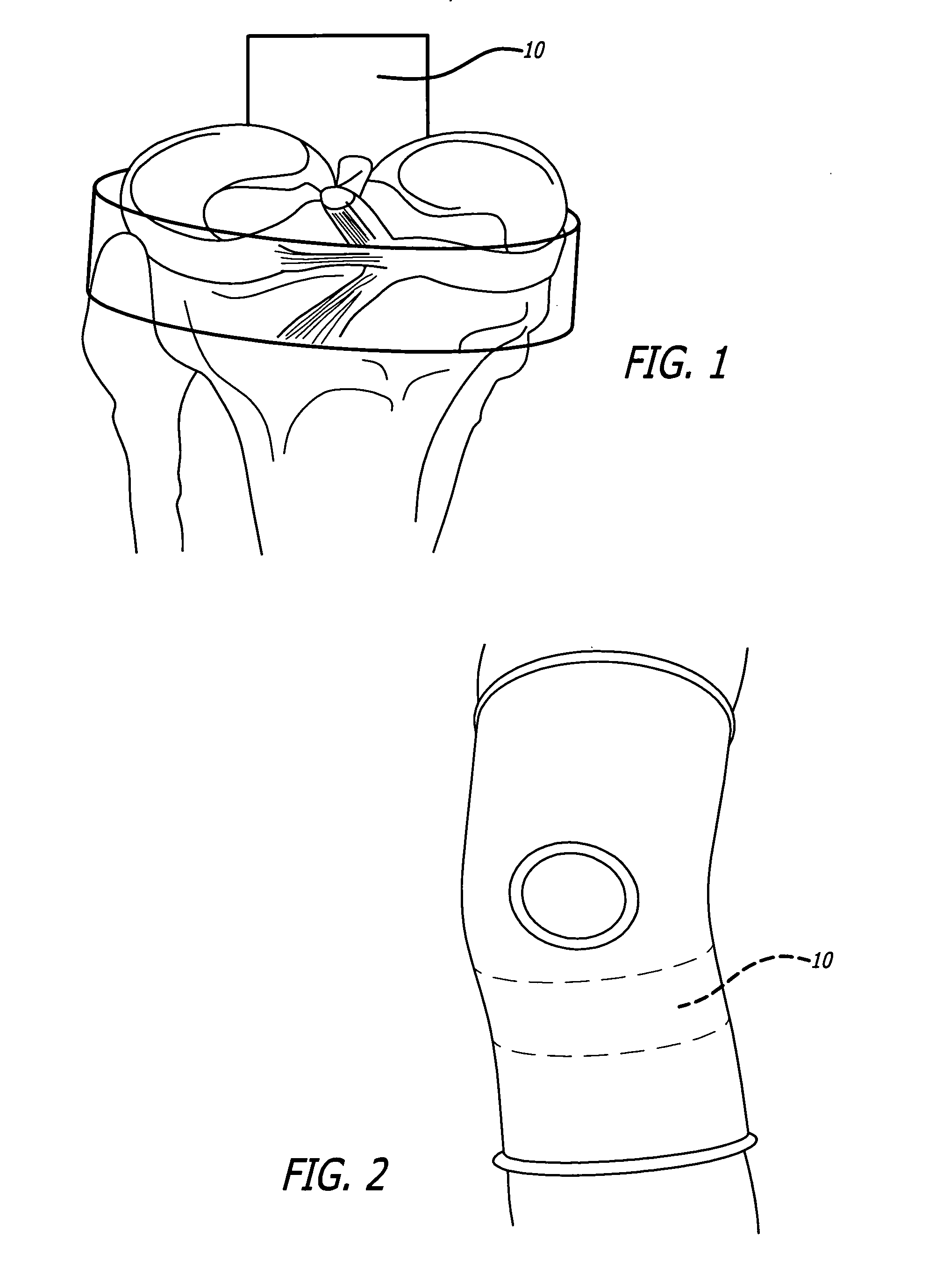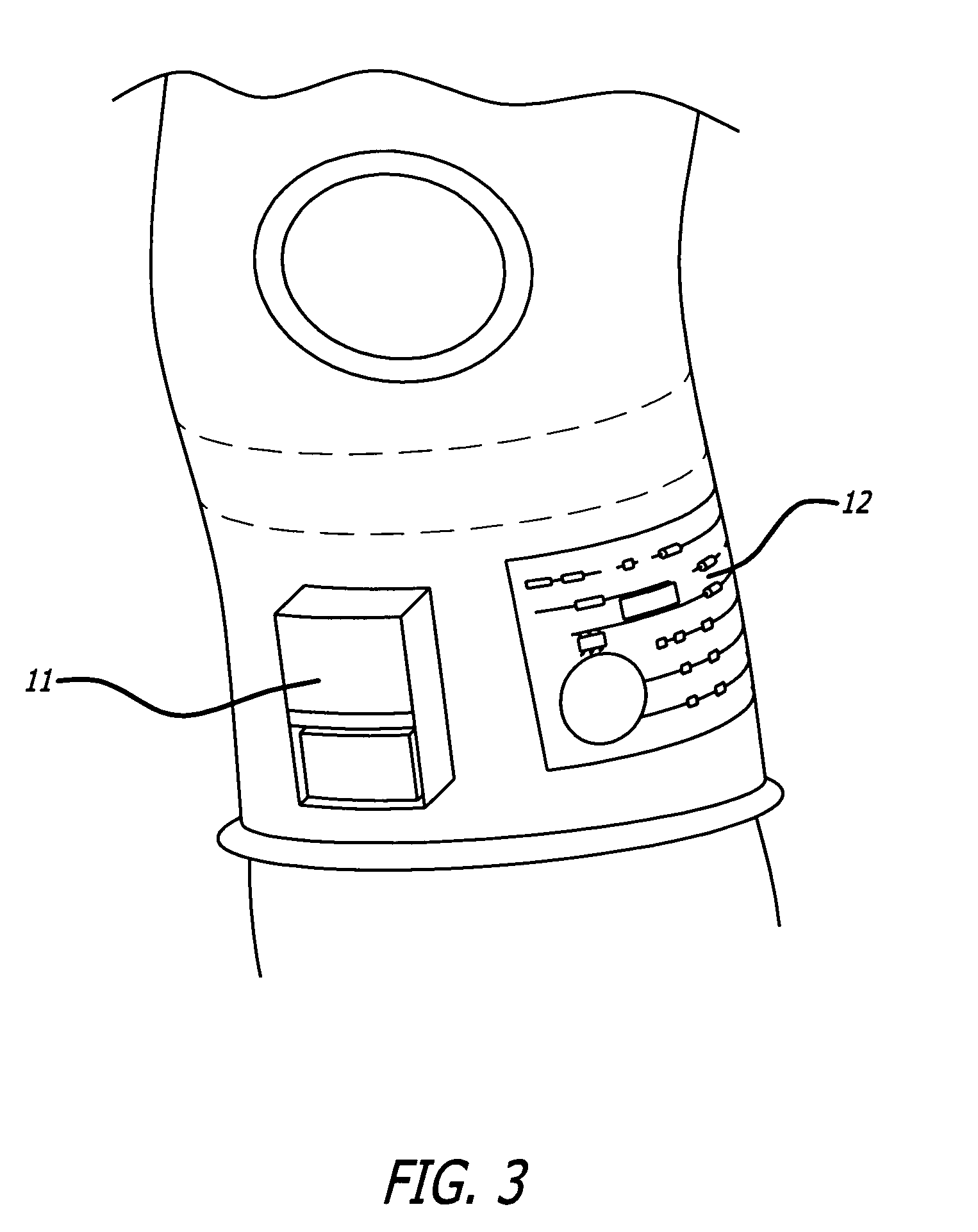Stimulating galvanic or slow AC current for therapeutic physiological effects
a technology of physiological effect, applied in the field of stimulating galvanic or slow ac current for therapeutic physiological effect, can solve the problems of negative electrode unfortunately producing skin damaging hydrochloric acid, and increasing the risk of skin injury, so as to reduce the dc-like blood stimulation, effective deliver very low frequency ac current, and reduce the effect of skin injury
- Summary
- Abstract
- Description
- Claims
- Application Information
AI Technical Summary
Benefits of technology
Problems solved by technology
Method used
Image
Examples
Embodiment Construction
[0011] Investigations have shown that a galvanic treatment of sufficient intensity exerts vasomotor stimulation lasting for several hours. Since the effect at each pole is about the same, no special attention has to be paid to the direction of current flow or polarity. This therefore, equates to a very slow AC signal which while behaving like DC, does not have its problems. The value of an AC signal over DC is apparent when one considers that a DC signal will develop skin injury producing chemicals. The positive pole sends hydrochloric acid to the skin causing irritation and the negative pole sends sodium hydroxide to the skin causing burns and possible permanent scarring. With the use of a slow AC signal at a frequency slow enough to mimic the DC therapeutic effect, the unwanted acid and alkaline chemicals are neutralized. Another innovation which makes a DC signal usable without the aforementioned skin injury problems is the use of charged membranes, such as those described in the...
PUM
 Login to View More
Login to View More Abstract
Description
Claims
Application Information
 Login to View More
Login to View More - R&D
- Intellectual Property
- Life Sciences
- Materials
- Tech Scout
- Unparalleled Data Quality
- Higher Quality Content
- 60% Fewer Hallucinations
Browse by: Latest US Patents, China's latest patents, Technical Efficacy Thesaurus, Application Domain, Technology Topic, Popular Technical Reports.
© 2025 PatSnap. All rights reserved.Legal|Privacy policy|Modern Slavery Act Transparency Statement|Sitemap|About US| Contact US: help@patsnap.com



